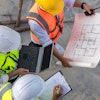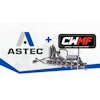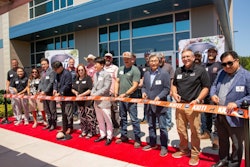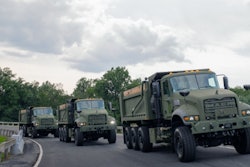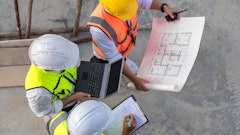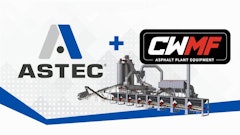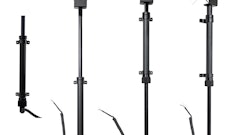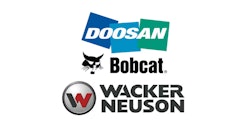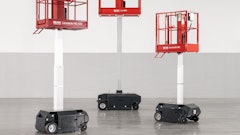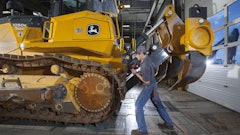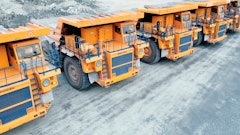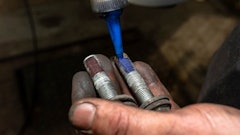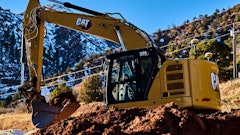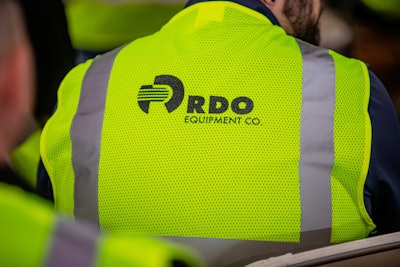
August marks the final push of the summer, when, if you’re not on holiday, you’re gearing up for those last few weeks of long hours finishing those projects that need to get done before the fall freeze. For roadbuilders, it can be an especially hectic time as projects are kicked into overdrive to meet seasonal deadlines. Despite the frenzied push for productivity, one of the most important questions contractors should be asking is how to improve road construction safety with technology.
While visiting road construction projects and even acting as the work zone flagger, I’ve experienced the “zoom” of traffic, the blaze of the high noon sun and the rapid pace of crews at work. It’s exciting to witness these expert contractors build infrastructure, but it can be a little unnerving when the “zoom” of it all comes a little too close, and I know I’m not alone in that feeling.
According to the results of a recent highway work zone study conducted by the Associated General Contractors of America, 64% of highway contractors report that they have experienced a work zone accident. At RDO Equipment Co., we know most teams engage in proven safety practices, and more often are implementing technology solutions to add another layer of safety. This month, when roadbuilders are often nearing the end of their projects, let’s review a few ways to reduce risk within work zones despite the high heat and production hours as crews look forward to that last pass.
1. Add Tech to Trusted Wearables and Traffic Cones
Classics like neon vests, helmets and traffic cones can be enhanced with sensors. In fact, an easy entry to developing a “smart work zone,” where machines talk to traffic management teams and vehicle apps, comes in the form of cones with sensors.
Reduces these potential risks: Worker injury from fatigue, heat stress or proximity to danger zones
How it helps:
Monitors crewmember vital signs and jobsite environmental conditions
Sends alerts if a worker enters a restricted or hazardous area
Enables faster emergency response through location tracking
Cones with sensors, or traffic monitoring devices (TMDs), collect and send data to project managers so they can make informed decisions about lane closures, congestion control and worker safety. Smart personal protective equipment (PPE) also quickly alerts teams to potential hazards in real time.
2. Use Machine Control and Guidance Systems
We’ve covered how John Deere’s SmartGrade or HAMM’s SmartCompact can improve accuracy, but these machine control and guidance systems can also reduce the need for operators to check grades from outside the cab.
Reduces these potential risks: Operator error, rework and equipment collisions
How it helps:
GPS and 3D modeling guide graders, dozers and pavers with precision
Reduces the need for ground personnel near heavy machinery.
Next, let’s examine how these machine control systems and the data they provide can improve communication between different work zones.
3. Integrate Fleet Management Software (FMS)
John Deere’s Operation Center or WIRTGEN’s Performance Tracker helps project managers and crews in the work zone share vital project progress while protecting crews from potential hazards when many machines are moving.
Reduces these potential risks: Miscommunication, scheduling conflicts and compliance gaps
How it helps:
Provides a centralized platform for real-time updates, safety checklists and incident reporting
Tracks inspections, permits and safety training records
Improves coordination between field crews and project managers
As Department of Transportation officials follow the eTicketing trend, equipment managers can connect their fleet to the Operations Center and help reduce the number of times roadbuilding material delivery drivers must get out of the cab in the midst of commuters and moving crews.
4. Build Digital Twins or Models
Digital twins — virtual models of machines and jobsites — help teams anticipate and resolve issues before they occur
Reduces these potential risks: Design errors, utility strikes and construction conflicts
How it helps:
Identifies clashes between utilities, drainage and road layers
Enhances collaboration between engineers, contractors and inspectors
A technology partner can be a resource to project managers in implementing digital twins or creating models for road crews over the course of a project.
Safety Isn't a Detour
As the summer sun sets on another roadbuilding season, the pressure to finish strong while dealing with the high production hours, planned time off and long hours under the sun can create circumstances in which hazards occur. The integration of smart technology, from sensors to digital twins, isn’t just about efficiency; it’s about protecting the people who build the roads we all rely on.
Equipment and technology partners can supply the training and remote support that creates safety systems. By equipping machines and people with additional machine monitoring and a FMS, we all arrive safely at home, just in time to leave for that last long weekend at the lake.

